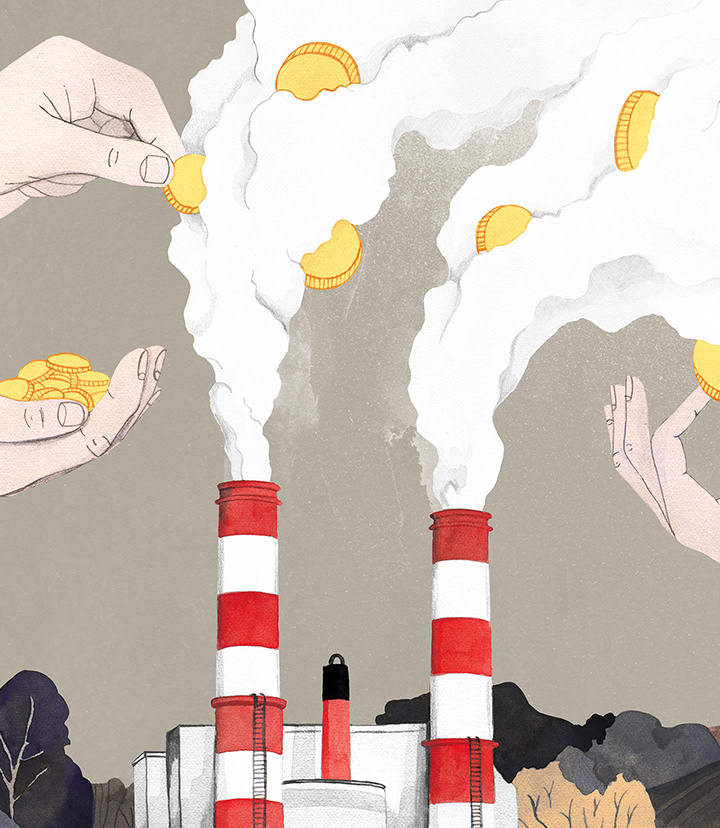Report on the Interplay Between Air Pollution Reduction and Accelerated Global Warming
Executive Summary
A recent study published in Nature Communications Earth and Environment has identified a primary driver for the accelerated rate of global warming observed over the last two decades. The findings indicate that a significant reduction in industrial air pollution, specifically sulfur dioxide from East Asia, has inadvertently intensified warming. This report analyzes the study’s conclusions, focusing on their profound implications for the United Nations Sustainable Development Goals (SDGs), particularly those concerning health, climate, and energy.
Analysis of Findings and Linkages to Sustainable Development Goals (SDGs)
The “Unmasking” Effect of Pollution Control on SDG 13 (Climate Action)
The study elucidates how successful air quality initiatives have revealed the true magnitude of climate change, a phenomenon researchers describe as an “unmasking.”
- Mechanism: Sulfur dioxide emissions from industrial activities form sulfate particles that reflect sunlight away from Earth, creating a temporary and localized cooling effect.
- Impact: A 75 percent decline in sulfate emissions in East Asia has significantly diminished this cooling effect.
- Consequence for SDG 13: This reduction has “unmasked” the underlying warming caused by greenhouse gases, leading to an accelerated rise in global temperatures and highlighting the urgent need for more aggressive climate action to meet the goals of SDG 13.
The Nexus of SDG 3 (Good Health) and SDG 13 (Climate Action)
The report underscores a complex trade-off between achieving public health targets and managing climate impacts.
- Advancement of SDG 3: The crackdown on sulfur dioxide was a direct response to the severe health impacts of the pollutant, such as coughing and shortness of breath. This action represents a significant achievement for SDG 3 (Good Health and Well-being).
- Challenge for SDG 13: The positive health outcome has, however, intensified the challenge for SDG 13 (Climate Action) by removing a masking agent and accelerating warming. This demonstrates the need for integrated policy that addresses both goals concurrently.
Implications for Other Sustainable Development Goals
The findings extend beyond health and climate, touching upon several interconnected global goals.
- SDG 7 (Affordable and Clean Energy): The pollution originated from power plants and factories, emphasizing that a transition to clean energy sources is essential to simultaneously eliminate harmful air pollutants and the greenhouse gases driving climate change.
- SDG 11 (Sustainable Cities and Communities): The reduction of industrial pollutants contributes directly to creating healthier and more sustainable urban environments, a key objective of SDG 11.
- SDG 14 (Life Below Water): The report notes prior research linking the drop in sulfates to a rise in ocean warming, which directly threatens marine biodiversity and the sustainability of ocean ecosystems as outlined in SDG 14.
Conclusion and Forward Outlook
A Temporary but Critical Phase
Researchers project that the acceleration in warming resulting from pollution reduction will be a short-lived phenomenon. However, it serves as a critical warning about the underlying severity of greenhouse gas-induced warming.
Policy Imperatives for Integrated SDG Achievement
The study’s conclusions necessitate a holistic approach to sustainable development. Future environmental and energy policies must be designed to anticipate and manage the interconnected nature of the SDGs, ensuring that progress in one area, such as public health, does not inadvertently undermine critical goals in another, like climate action.
Analysis of Sustainable Development Goals in the Article
1. Which SDGs are addressed or connected to the issues highlighted in the article?
The article discusses issues that are directly and indirectly connected to several Sustainable Development Goals. The primary focus on air pollution, its health effects, and its unintended consequences on global and ocean warming links the content to the following SDGs:
-
SDG 3: Good Health and Well-being
The article explicitly mentions the health impacts of air pollution. It states that Chinese officials cracked down on sulfur dioxide because the pollutant “can cause wheezing, coughing, and shortness of breath.” This directly connects the cleanup efforts to the goal of ensuring healthy lives.
-
SDG 11: Sustainable Cities and Communities
The reduction of air pollution is a critical component of making cities sustainable. The article focuses on the cleanup of pollution from “power plants and factories” in East Asia, primarily China, which directly addresses the environmental quality of urban and industrial areas.
-
SDG 13: Climate Action
This is a central theme of the article. The entire study discussed is about how reducing air pollution has “unmasked” and led to an “acceleration of warming.” The article explores the complex relationship between pollution control and global climate change, highlighting the urgency of understanding and taking action on global warming.
-
SDG 14: Life Below Water
The article connects the atmospheric changes to marine environments. It notes that “Prior research had linked the drop in sulfates to a rise in ocean warming in the Pacific.” This establishes a clear link between the discussed air pollution policies and the health of oceans.
2. What specific targets under those SDGs can be identified based on the article’s content?
Based on the issues discussed, the following specific SDG targets can be identified:
-
Target 3.9: By 2030, substantially reduce the number of deaths and illnesses from hazardous chemicals and air, water and soil pollution and contamination.
The article’s description of China’s “crackdown on sulfur dioxide” because it causes respiratory issues like “wheezing, coughing, and shortness of breath” is a direct action towards achieving this target by reducing illnesses from air pollution.
-
Target 11.6: By 2030, reduce the adverse per capita environmental impact of cities, including by paying special attention to air quality.
The effort to clean up air pollution from “power plants and factories” in East Asia is a direct implementation of this target. The focus on reducing sulfur dioxide emissions is a clear example of paying “special attention to air quality” to lessen the environmental impact of cities and industrial regions.
-
Target 13.2: Integrate climate change measures into national policies, strategies and planning.
The article highlights an unintended consequence of a national policy (pollution control) on climate change. The finding that cleaning up pollution “has likely driven much of the recent global warming acceleration” underscores the need to integrate climate considerations into all environmental policies to avoid such outcomes and address warming more effectively.
-
Target 14.1: By 2025, prevent and significantly reduce marine pollution of all kinds, in particular from land-based activities, including marine debris and nutrient pollution.
While the article discusses ocean warming, not pollution in the traditional sense, the cause is land-based activity (reduction of industrial emissions). The link made between the “drop in sulfates” from industrial cleanup and the “rise in ocean warming in the Pacific” shows how land-based policies directly impact marine ecosystems, which is the broader focus of this target.
3. Are there any indicators mentioned or implied in the article that can be used to measure progress towards the identified targets?
The article mentions or implies several quantitative and qualitative indicators that can be used to measure progress:
-
Indicator for Target 3.9 & 11.6: Reduction in specific air pollutants.
The article provides a specific, measurable indicator by stating there was a “75 percent decline in sulfates in East Asia.” This directly measures the success of policies aimed at improving air quality and, by extension, reducing health problems associated with it.
-
Indicator for Target 13.2: Rate of global warming.
The article repeatedly refers to the “surge in warming” and the “acceleration of warming” as a key outcome. The rate of change in global temperature is a primary indicator for climate action, and the study discussed aims to explain the recent increase in this rate.
-
Indicator for Target 14.1: Rate of ocean warming.
The article explicitly mentions a “rise in ocean warming in the Pacific” as a consequence of the reduced sulfate pollution. The temperature of ocean water is a critical indicator for the health of marine ecosystems and is directly implied as a measurable outcome in the text.
4. Table of SDGs, Targets, and Indicators
| SDGs | Targets | Indicators |
|---|---|---|
| SDG 3: Good Health and Well-being | 3.9: Reduce deaths and illnesses from hazardous chemicals and air pollution. | Reduction in emissions of pollutants like sulfur dioxide, which cause respiratory illness. |
| SDG 11: Sustainable Cities and Communities | 11.6: Reduce the adverse per capita environmental impact of cities, paying special attention to air quality. | The “75 percent decline in sulfates in East Asia” as a measure of improved air quality. |
| SDG 13: Climate Action | 13.2: Integrate climate change measures into national policies, strategies and planning. | The rate of “global warming acceleration,” which is being influenced by national pollution policies. |
| SDG 14: Life Below Water | 14.1: Prevent and significantly reduce marine pollution of all kinds from land-based activities. | The “rise in ocean warming in the Pacific” linked to changes in land-based industrial emissions. |
Source: e360.yale.edu







